The sheer diversity of rock climbing in Washington State is impressive, to say nothing of the quality of its basalt columns, granite crack systems, and expertly set routes. In the Cascades, take in snow-capped mountain views on a multi-pitch route. Belay from a sandy river beach on the Olympic Peninsula. Choose from thousands of routes in Leavenworth’s rugged canyons.
There is truely something for everyone – beginner to expert, bouldering to sport and trad climbing. Though summer is the main climbing season, sunny crags to the east of the Cascade Range make climbing a solidly year-round sport.
One of the best (and safest) ways to experience Washington’s stellar rock climbing is by joining a guided outing. The American Alpine Institute and Northwest Mountain School offer guided climbs at some of the locations mentioned below, as well as multi-day instructional courses for different skill levels and terrains. Washington-based nonprofit Climbers of Color offers multiple 1-2 day rock climbing courses that are great for beginners.
Where to go Rock Climbing in Washington
Leavenworth

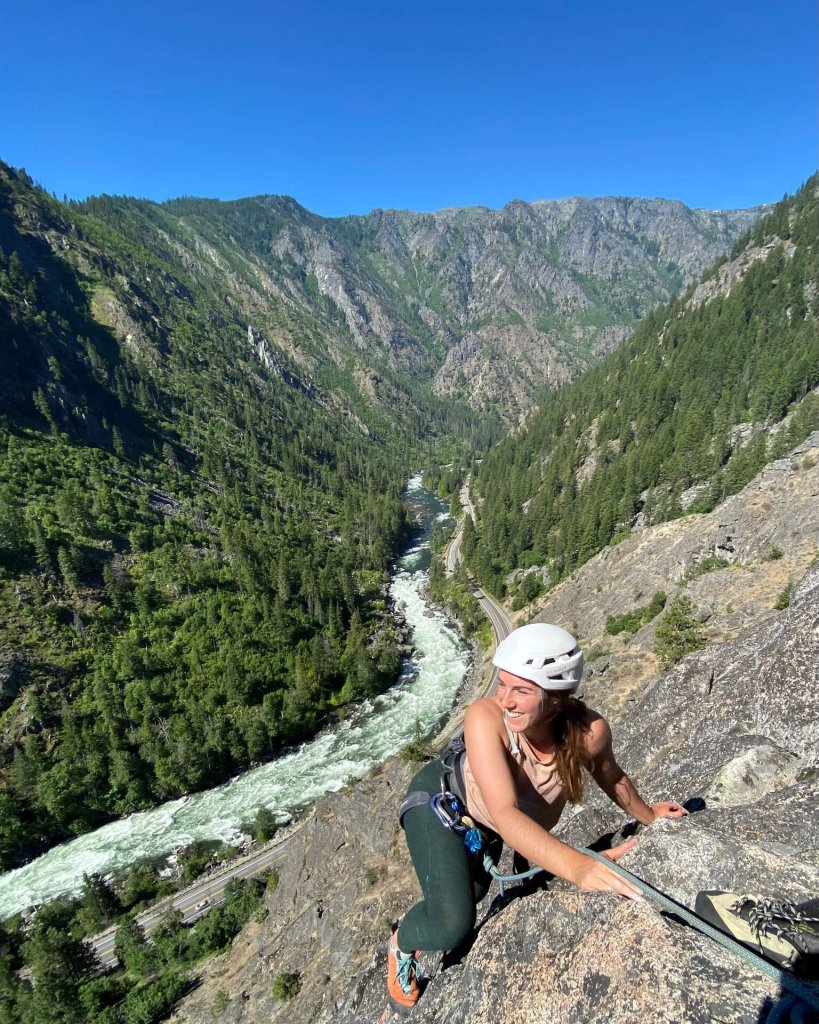
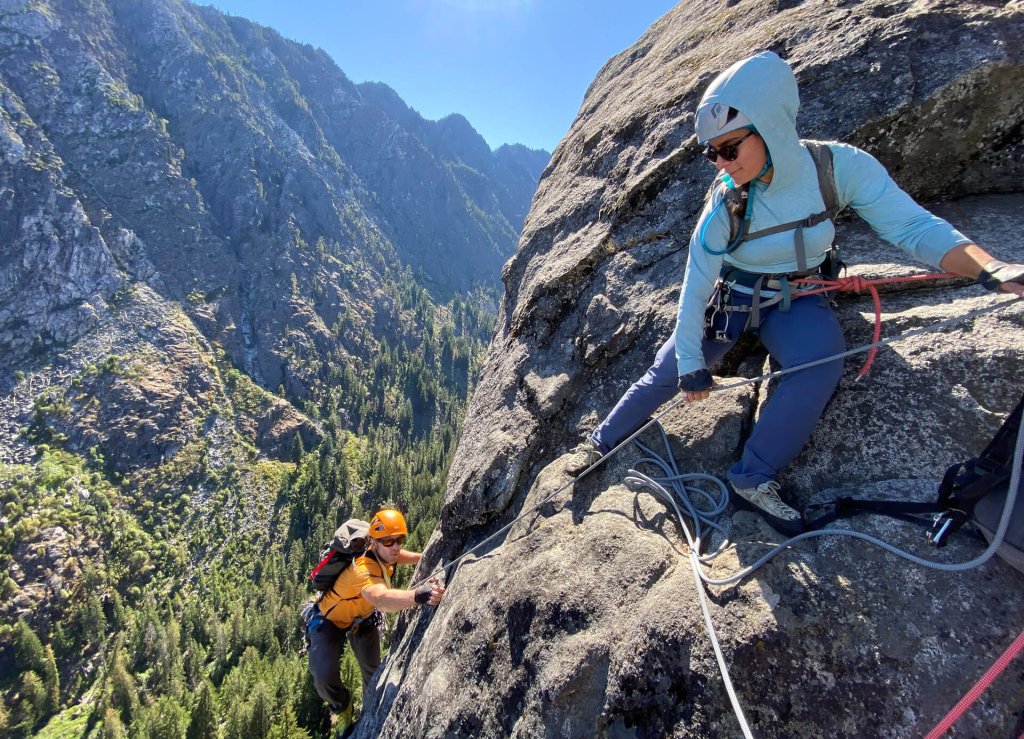
Good for: Bouldering, trad climbing, sport climbing, multi-pitch, cracks, slabs
When to climb: Spring through fall
Crags around Leavenworth, a Bavarian-themed hamlet in the eastern foothills of the Cascade Mountains, are some of the most touted climbing and bouldering areas in the Pacific Northwest. Tumwater Canyon and Icicle Creek Canyon especially stand out, with 2,000 routes collectively. Tumwater is situated along Highway 2, while Icicle Creek is more embedded in the forest. These areas are famous for their crack and slab climbing on stellar quartz diorite and granite crags. In Tumwater Canyon, Castle Rock and Midnight Rock have longer trad climbing, and Clem’s Holler has some fantastic sport climbs.
Beyond trad and sport climbing, Icicle Creek Canyon boasts Mad Meadows, an area renowned for some of the best bouldering in Washington, with almost 80 problems.
Northwest Mountain School offers guided rock climbing trips in the Leavenworth area from March through May. They guide everything from half-day trips to multi-day adventures and rock rescue courses.
Travel Tip: Bridge Creek Wall in Icicle Creek sometimes closes to protect nesting raptors. As the exact timing of this changes year to year, please check before you go.
Also See: Highway 2 Road Trip Stops
Index
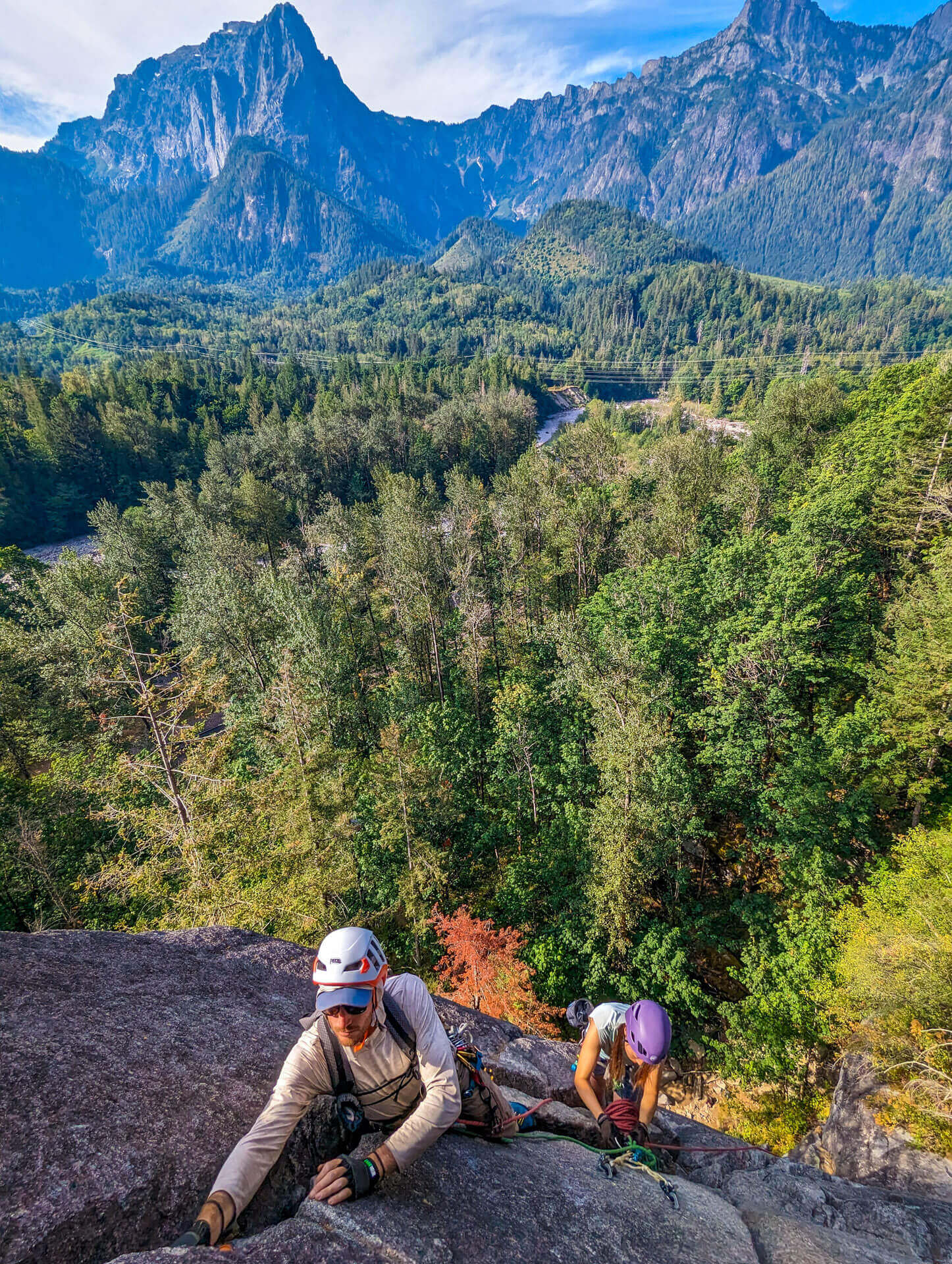
Good for: Multi-pitch, granite, sport climbing, trad climbing, route variety, easy access
When to climb: Spring through fall
Fine-grained, sticky granite outcrops tower over the town of Index along the Skykomish River and beckon rock climbers from near and far. It’s especially popular given its proximity to Seattle, 55 miles east. In its nine sections, over 500 routes offer a range of climbs, both sport and traditional, single-pitch to six pitches long. From splitter cracks to slab faces, climbers have lots of choices. Some routes are as close as a 15-minute walk from the parking lot.
Given that the cliffs are nestled into a rainforest, winter precludes much (but not all) climbing. In the summer, climbers chase the shaded routes throughout the day. Want someone to show you the ropes?
The American Alpine Institute in Bellingham offers guided climbing outings to Index.
Columbia River Gorge
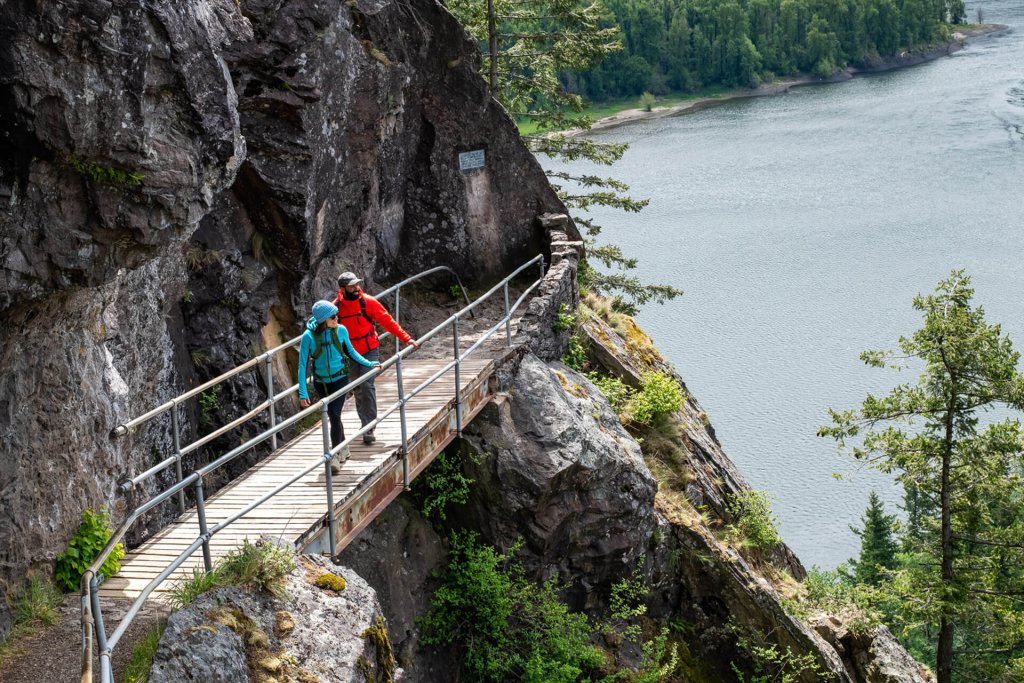
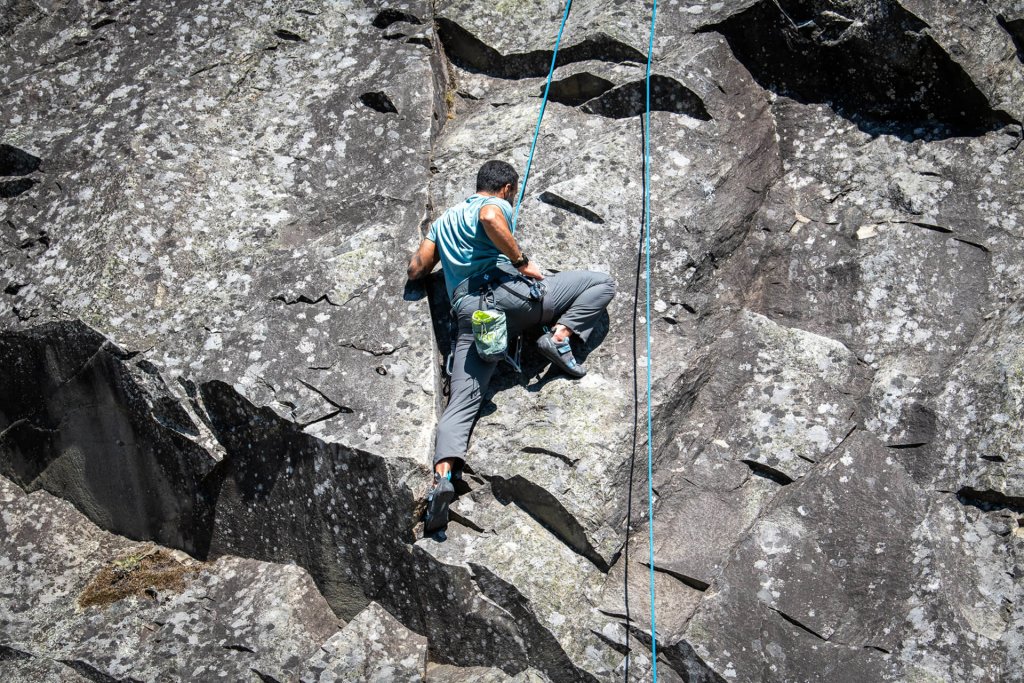
Good for: Gorge views, easy access, trad climbing, sport climbing
When to climb: Year-round
On a 27-mile stretch along the Columbia River Gorge, find three Washington rock climbing and bouldering hot spots. Just east of Washougal, Ozone has over 100 well-shaded routes. Though there is both traditional and sport climbing, the emphasis is on the latter.
Just 11 miles east on Highway 14, you’ll hit Beacon Rock State Park, which has a storied history of rock climbing. Beacon Rock, the eroded core of an ancient volcano, juts 850 vertical feet into the sky, creating the iconic steeply featured basalt big wall crag that climbers love. Most of its 151 routes are trad routes, though there is a bit of sport climbing and bouldering. A Discover Pass is required.
Travel Tip: Aim to visit during off-peak times (weekdays or early morning), as Ozone is considered the outdoor climbing gym for the Vancouver/Portland area, and Beacon Rock is also popular. The south and southeast faces of Beacon Rock close annually from Feb. 1 through mid-July to protect nesting falcons. The northwest face is open for climbing year-round.
Fifteen miles east of Beacon Rock is Windy Slab, a small roadside crag with about 15 short routes (45 feet) with easy to moderate difficulty ratings. The Columbia Gorge views are stellar from the top.
Also See: Dog-Friendly Gorge Road Trip
Elwha River, Port Angeles
Good for: Sport climbing, river views, sandstone
When to climb: Spring through fall
Just east of Port Angeles runs the wild Elwha River. Along the river bank, a bit north of the Olympic National Park boundary, there are a couple of areas where siltstone and sandstone form featured cliffs that draw climbers. This kind of rock isn’t the safest for trad climbing, as it likes to crumble, so instead look to the bolted sport routes. The Elwhall climbing area on the west side of the river has 29 routes geared mostly to more experienced climbers. On the eastern bank, check out Waka Beach and the Underhood, which are great areas for beginners with 17 collective routes. Climbers belay right from the river’s edge, so the east side is only open when the river is low enough during the dry season.
Travel Tip: Climbing areas along the Elwha River are in a restoration zone, so camping, fires, and dogs are not allowed.
Frenchman Coulee (Vantage)
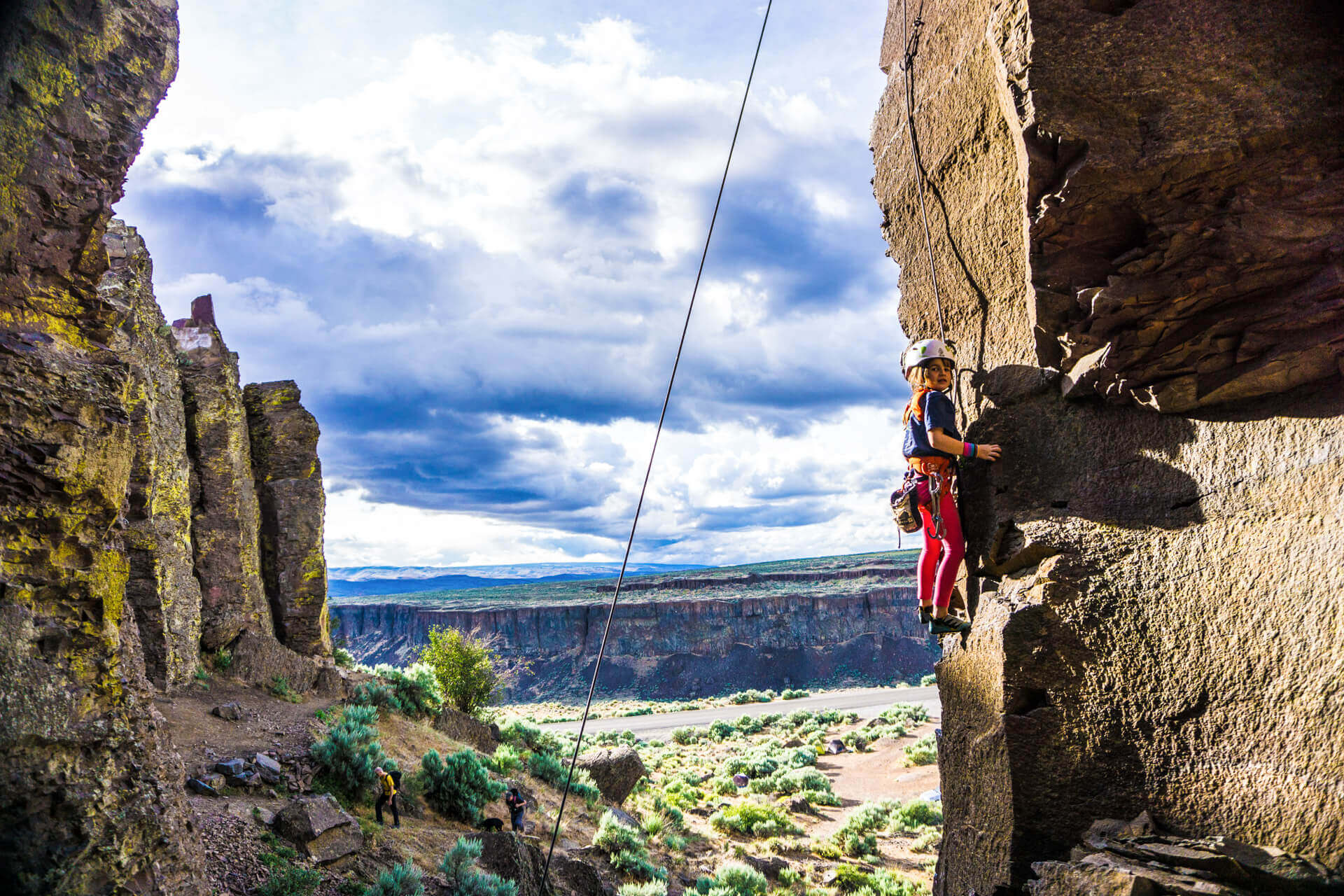
Good for: Winter climbing, sport climbing, trad climbing, families
When to climb: Year-round
Acclaimed as some of the best rock climbing in Washington State, Frenchman Coulee (known by climbers simply as Vantage) boasts almost 700 routes, both sport and trad. The dramatic faces, columns, pillars, and cracks of the towering basalt are premium, but a bonus is the dry winter weather that mostly allows for year-round climbing. The south-facing Sunshine Wall is heralded as one of the best off-season crags in the state, though it’s best avoided in summer. For beginners and families, The Feathers area is ideal, as the approach is negligible, and there are lots of short, easy routes.
If you want a guided experience, North Cascades Mountain Guides can customize trips for climbers of all levels.
Tieton River, Yakima
Good for: Winter climbing, trad climbing, sport climbing, desert, sub-alpine, cracks
When to climb: Year-round
Just over 20 miles northeast of Yakima, a 20-mile stretch of Highway 12 hugs the winding Tieton River and provides access to a number of crags with a total of over 400 routes. With a near-even division between sport and trad routes and a wide range of difficulty levels, there’s a little something for everyone. In the semi-arid lower canyon, the andesite volcanic columns draw crack climbing fans while the more forested upper canyon has an abundance of walls with sport routes. Although most climbs here are single-pitch, Goose Egg Mountain has a slabby area with routes up to eight pitches long. Contact guides at Edgeworks out of Tacoma for a customized trip to Tieton.
Travel Tip: The Royal Columns and The Bend can be closed for the peregrine raptor nesting season, roughly from April through July, and there might be closures during the spring nesting season for eagles.
Also See: 3-Day Yakima Valley Summer Itinerary
Washington Pass
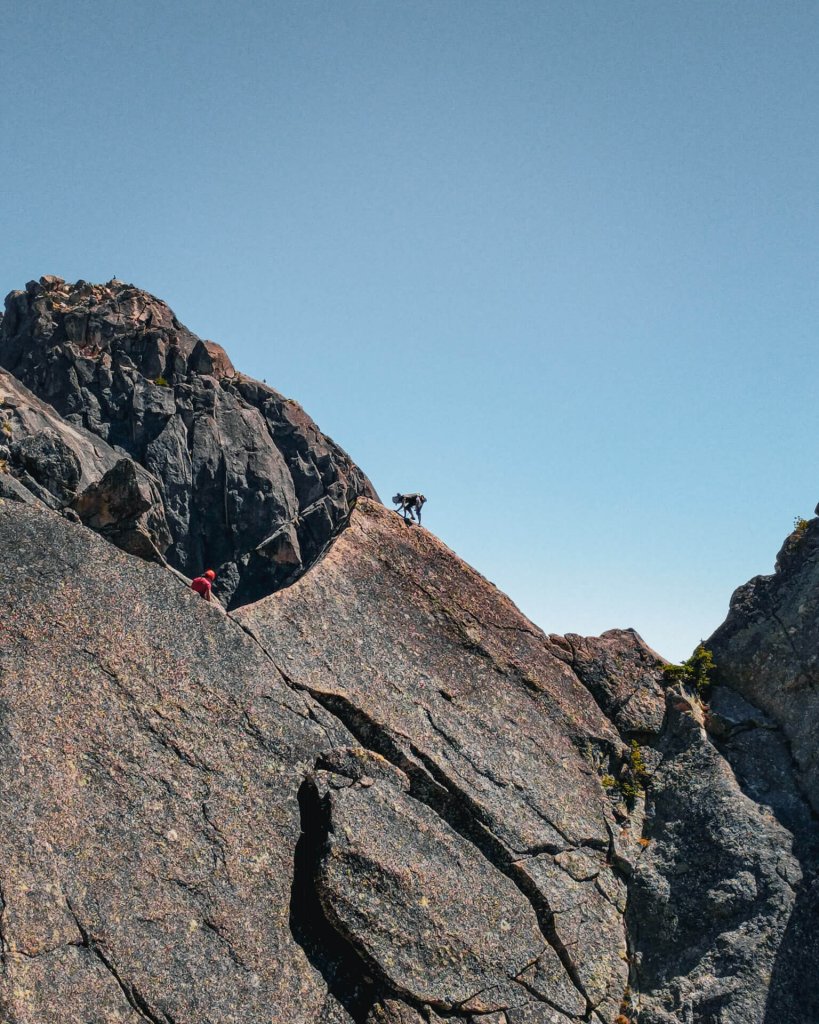
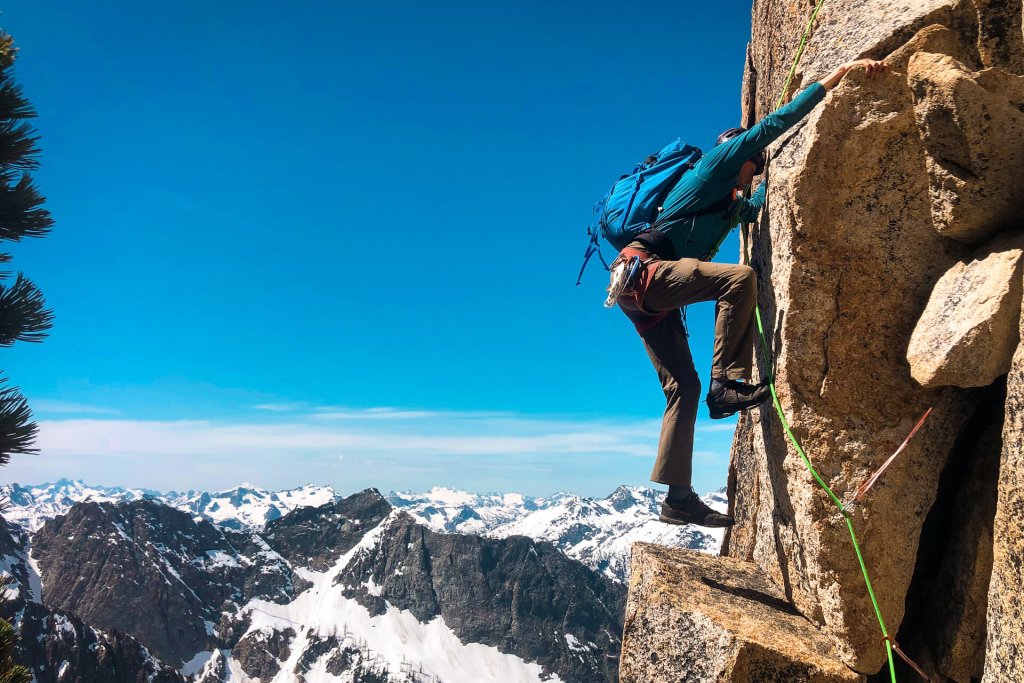
Good for: Trad climbing, sport climbing, multi-pitch, vistas, easy access
When to climb: June through September
The phenomenal Cascade Mountain views from the Washington Pass crags are hard to beat. While climbers certainly enjoy the epic vistas, they come for the grippy alpine granite columns and crack systems. The easily accessed routes have a wide range of difficulty and are pretty evenly split between trad and sport. From single-pitch sport climbs to the 26-pitch Liberty Traverse trad route, most climbers can find their wall. At about 5,000 feet of elevation, the climbing season is short – the length is determined by the thaw and the first snow.
Travel Tip: Certain areas, like the Newhalem Crags, close seasonally from March through mid-July to protect the nesting falcons.
Check out the American Alpine Institute for guided trips, from one-day adventures to multi-day big wall expeditions.
Spokane
Good for: Bouldering, top roping, sport climbing, easy access
When to climb: Year-round
In Eastern Washington, Spokane is a haven for climbers, with a myriad of options in town and on the outskirts. Easily accessible in urban Spokane, Cliff Drive is a basalt crag with an approach as short as a baseball throw. Its 21 routes include sport and top rope. The most popular Spokane crag is Minnehaha, on the northeast edge of the city. Its 104 routes vary from easy to hard. Besides being a choice spot for bouldering in Washington, all of the featured granite climbing routes can be top-roped.
On the southeast side of Spokane, Dishman has 70 routes that trend harder than Minnehaha, with overhang granite and small crimps. While there are top roping opportunities, sport climbing and bouldering are the centerpieces.
Mount Erie
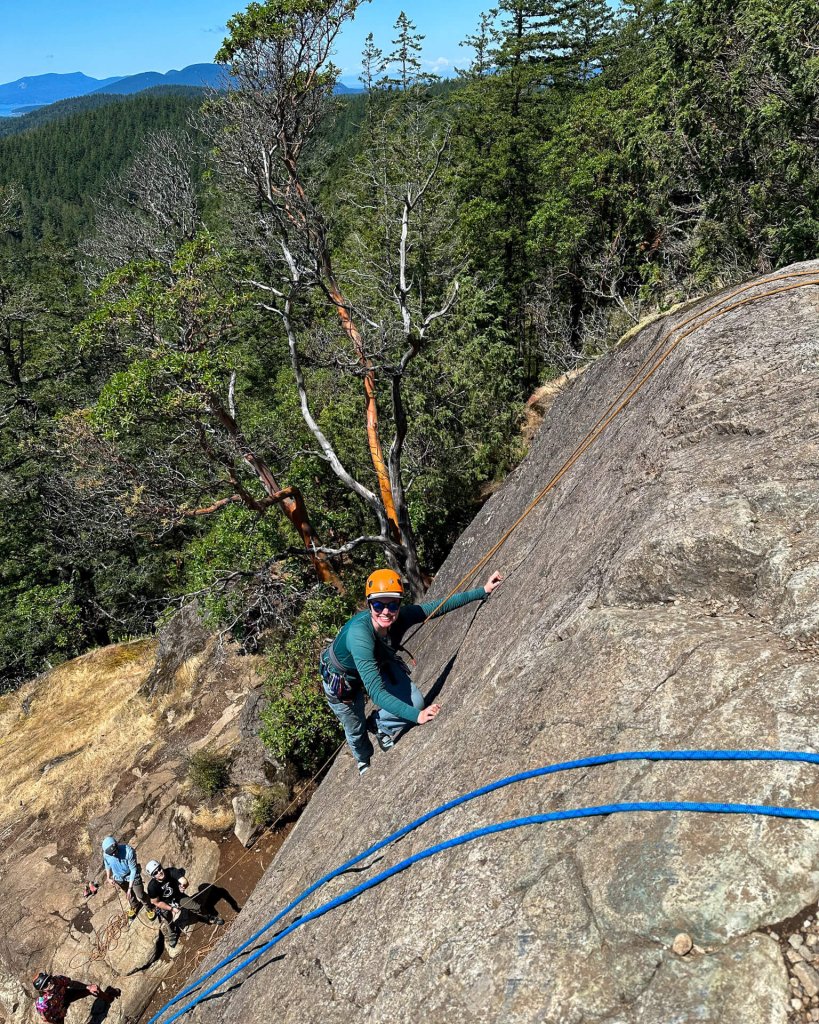
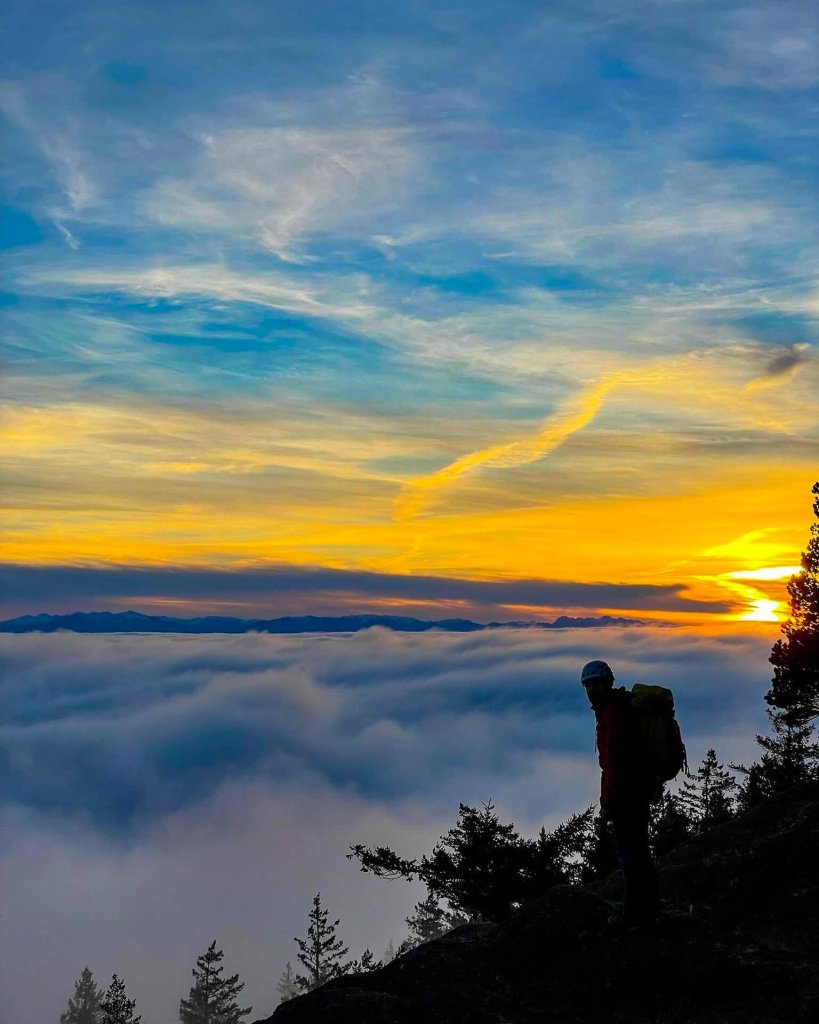
Good for: Vistas, top roping, sport climbing, trad climbing
When to climb: Year-round
Technically located within the city limits of Anacortes on Fidalgo Island, Mount Erie is known for its postcard views of Puget Sound, the San Juan Islands, the Olympics, and the Cascade Range. It’s some of the prettiest rock climbing in Washington State. Those vistas, along with almost 400 routes on textured diorite rock, make it very popular with climbers (parking can be tricky, so arrive early).
Because there are not many cracks on the mountain’s south flank, sport climbing dominates the area, though there is a bit of trad. Route difficulty ranges from challenging multi-pitch trad to easy single-pitch sport routes. Plus, top ropes can be set up at many of the crags. The American Alpine Institute offers guided trips to Mount Erie.
If bouldering is your jam, head about 45 minutes north toward outdoorsy Bellingham and Larrabee State Park. This spot is known for its beachside bouldering. Note that some of these sandstone routes are only climbable during low tide. Make sure to have a Discover Pass on hand.
Banks Lake
Good for: Remote crags, winter climbing, sport climbing, bouldering, granite
When to climb: Year-round
Between Spokane and Wenatchee you’ll find Banks Lake, situated along the ancient Grand Coulee riverbed. The lake’s climbing areas—with around 160 routes on the east and west shores—have gained prominence in recent years. The majority of routes on the granite domes and boulders are sport, but there are some trad routes and an increasingly popular bouldering circuit in Northrup Canyon. Enjoying an average of 192 days of sun per year, the crags bake in the summer, making it popular as an off-season destination for rock climbing in Washington State.
Responsible Rock Climbing and Safety
As with any sport, it’s important to come prepared and know your skill level and limits. Going with a guide can provide an extra layer of safety, especially if you’re newer to rock climbing. Here’s what to keep in mind:
- Research your destinations and the routes. Route grading is subjective and can lean easier or harder due to location, when the routes were set, and other factors. Be aware that grades in a gym might be more difficult outside in nature.
- Familiarize yourself with your destination’s rules and regulations.
- Check for closures or restrictions to protect wildlife.
- Think about logistics such as approach time, parking, cell service (or lack thereof), weather, food, and water – all well before you’re at the trailhead.
- Go with a buddy or group, and make sure to let friends or family know your route plan.
- Practice Leave No Trace principles. This includes packing out whatever you bring in, staying on trails to prevent erosion, and using best bathroom practices.
- Be good climbing citizens by keeping your pup on-leash (or at home) and keeping music to a minimum.
Beyond basic safety and proper gear. James Pierson with the American Alpine Institute encourages folks to be aware of their surroundings. “It’s important to have the bandwidth for situational awareness so you can recognize hazards like incoming weather, rock fall areas, and extreme heat. Conditions are ever changing throughout the season, and even within a day.”
Pierson recommends choosing one element of a challenge – whether it be endurance, technical difficulty, or strength – and focusing on that during your climb.
And, as always, enjoy your time in Washington’s great outdoors.
About the Author
Ellee Thalheimer is a freelance writer and guidebook author based in the Pacific Northwest who has contributed to publications like Lonely Planet Guidebooks, Alaska Airlines Magazine, and Adventure Cyclist Magazine. When she can’t get outside, she writes fiction, drinks local IPAs, and perfects her handstands.
Featured image courtesy of Northwest Mountain School
